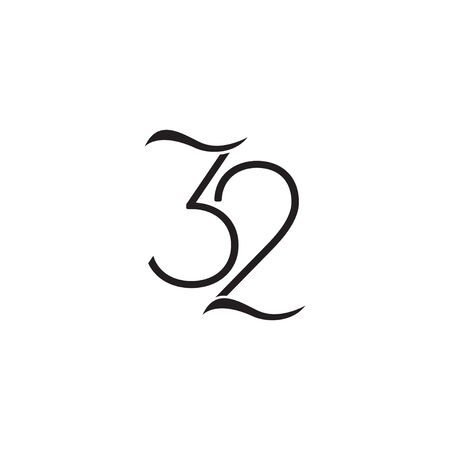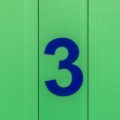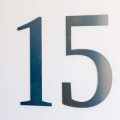Ancient Beginnings: Numerology’s Early Footprints in Britain
Long before the written word graced the British Isles, the land was alive with whispers of magic and mystery. Among the misty hills and ancient woodlands, numbers held a sacred resonance for both the Celts and Druids—two spiritual traditions deeply woven into Britain’s early cultural fabric. Far more than mere counting tools, numbers were seen as living symbols, each imbued with unique energies and meanings. The Celts believed that certain numbers—such as three, which symbolised harmony and balance—had the power to unlock hidden truths within nature and spirit. Druidic wisdom elevated this numerological awareness, using numbers in rituals, storytelling, and even in the intricate knotwork patterns that echo through British artefacts to this day. Through oral tradition, these early Britons wove numbers into their daily lives: marking seasons, guiding decisions, and connecting with the unseen realms. This reverence for numbers laid subtle but profound foundations for what would later blossom into the rich tapestry of British numerological beliefs—a legacy whispered through stone circles, sacred groves, and the folklore still alive in the countryside.
2. From Roman Roads to Saxon Lore: The Evolving Tapestry
As we journey back through the mists of British history, numerology’s story unfurls along ancient pathways paved by Roman engineers and whispered through shadowy Saxon forests. The arrival of the Romans in Britannia brought more than straight roads and grand architecture—they seeded a fascination with numerical order, patterns, and symbolism that would echo across centuries. Roman numerals, intricate calendars, and meticulous measurements laid a mathematical foundation beneath the daily life of these islands, forging a subtle but profound shift in how numbers were perceived.
Yet, as the legions retreated and Saxon tribes settled the land, this rational approach to numbers began to intertwine with older, wilder traditions. The Anglo-Saxons saw the world as enchanted, where every stone and stream pulsed with hidden meaning. Numbers became talismans—woven into riddles, runes, and folklore. Three was sacred for its balance; seven held mystical power; nine signified endings and new beginnings. In their lore, numbers were not just tools for counting but keys to unlocking the mysteries of fate and spirit.
The Interplay of Roman Precision and Saxon Spirit
Roman Influence |
Saxon Mysticism |
|---|---|
| Standardised numerals (I, II, III…) | Runic symbols representing numbers |
| Calendrical systems tracking seasons | Seasonal festivals based on sacred numbers |
| Engineering feats requiring precise measurement | Folk tales and prophesies woven around number symbolism |
| Legal codes codifying value and penalty in numbers | Superstitions about lucky or unlucky numbers |
A Unique British Synthesis Emerges
This blend created a peculiarly British way of understanding numerology—one foot grounded in the logic of Rome, the other stepping lightly through the dreamscapes of Saxon legend. Even today, echoes linger: from the numbering of ceremonial processions to the reverence for “three wishes” in fairy tales, Britain’s numerological tapestry is woven from both calculated reason and wild intuition.

3. Medieval Monks and Mystical Manuscripts
Within the shadowed sanctuaries of medieval Britain, numerology found fertile ground amongst the learned monks and scholars who dwelled within ancient abbeys and monasteries. These sacred spaces, echoing with Gregorian chants and illuminated by flickering candlelight, became crucibles for spiritual contemplation and intellectual discovery. British monastic life was not merely about prayer; it was a devotion to uncovering the divine mysteries woven into the fabric of the universe—including those hidden in numbers.
Driven by a desire to understand God’s cosmic design, medieval monks meticulously copied and translated ancient texts from Latin, Greek, and even Hebrew sources. Through these manuscripts, they encountered Pythagorean numerology and the mystical traditions of early Christianity. The British Isles thus became a bridge between Eastern wisdom and Western tradition, where sacred geometry—spirals, circles, and symbols—was inscribed into stone cloisters and stained glass windows. Numbers were more than mere figures; they were keys to unlocking spiritual truths.
The number seven, for example, held special significance in both Christian theology and local folklore—echoed in the seven sacraments, seven deadly sins, and the seven hills said to surround many British towns. Monastic scholars believed that understanding such patterns could reveal God’s will and offer guidance for both individuals and communities. Their illuminated manuscripts intertwined scriptural passages with intricate numerological diagrams, offering a glimpse into their profound reverence for sacred order.
In these hallowed halls, numerology was not simply an abstract curiosity but an integral part of daily devotion—a contemplative art that shaped rituals, architecture, and even agricultural cycles. The echoes of these mystical explorations still linger in the stone walls of ruined abbeys across the British countryside, whispering tales of a time when numbers were regarded as vessels of the divine.
4. Numerology in Folklore and British Superstition
Step into the shrouded pathways of British folklore, and you’ll soon find numbers whispering through centuries-old hedgerows, haunting age-old cottages, and lingering in the collective imagination. The British Isles are steeped in tales where numerals hold sway over destiny—a silent code woven through rituals, warnings, and whispered bedtime stories. Numbers were never mere markers of quantity; they shimmered with meaning, their presence believed to tip the balance between fortune and misfortune.
The Magic of Seven: A Lucky Charm Across the Isles
Of all mystical numbers, none has captured the British heart quite like seven. Legends abound of seventh sons blessed with healing hands or second sight, a belief so powerful it found its way into both rural remedies and royal courts. From the seven hills of Edinburgh to tales of fairies granting wishes on the seventh night, this number gleams with promise, protection, and potential.
| Number | Symbolism in British Folklore |
|---|---|
| 7 | Luck, protection, magic (seventh sons, seven-leaved clovers) |
| 3 | Completeness (three wishes, three trials in fairy tales) |
| 13 | Misfortune (Friday the 13th superstition) |
The Shadow of Thirteen: Warding Off Unlucky Spirits
If seven is a beacon, thirteen looms as a warning. In many an English village and Scottish glen, the number thirteen is met with wary glances—its reputation for ill luck reinforced by tales of disaster and ghostly mishaps. Hospitality was shaped by such beliefs; some old inns omitted room thirteen altogether. Even today, Friday the 13th is approached with caution—a day when fate feels poised on a knife’s edge.
Other Enchanted Numbers in Local Lore
The triad also weaves a golden thread through British storytelling—the granting of three wishes or heroes facing three daunting challenges before earning their happy ending. Meanwhile, nine was thought to ward off evil spirits when inscribed above cottage doorways in Cornwall or recited in protective charms across Yorkshire moors.
A Living Legacy: Numerology’s Echoes Today
Though time has marched forward, these superstitions linger in language and tradition—from skipping the thirteenth step on winding staircases to making a wish at 11:11. Through these enduring rituals and tales, British culture continues to honour the hidden power of numbers—an ancient magic humming quietly beneath everyday life.
5. Victorian Revival: Esoteric Societies and Spiritual Seekers
The Victorian era was a time of innovation, exploration, and paradox—a society simultaneously obsessed with scientific progress and the mysterious whispers of the unseen world. As gas lamps flickered along the misty streets of London, a new breed of spiritual seekers emerged from drawing rooms and candlelit parlours, yearning to unlock the hidden codes of existence. Among them were visionaries and eccentrics who found themselves enchanted by numerology’s ancient allure, believing that numbers held keys to personal destiny and cosmic order.
In this age, secret societies flourished—none more influential than the Hermetic Order of the Golden Dawn. Founded in 1888, its members included poets, scholars, aristocrats, and occultists. They wove together strands of Kabbalistic teachings, Egyptian mysteries, and Pythagorean number lore into their rituals. Within these clandestine circles, numerology was not merely an intellectual curiosity; it became a living practice for self-transformation and spiritual ascent.
Victorian spiritualism also played its part in reviving Britain’s fascination with numbers. Séances became fashionable among the upper classes, as mediums claimed to receive cryptic messages from the beyond—often encoded in symbolic numbers or sequences. The likes of Florence Farr and W.B. Yeats (both Golden Dawn members) saw numerical patterns as bridges between worlds, offering glimpses into fate and higher wisdom.
The cultural climate of Victorian Britain—with its blend of rational enquiry and gothic imagination—provided fertile ground for numerology’s renaissance. Newspapers reported on numerological predictions; parlour games with mystical undertones spread through society; even Queen Victoria herself was rumoured to consult with diviners who read her future in numbers.
Through these esoteric societies and spirited gatherings, numerology was woven once again into the fabric of British life. Its revival was not simply an escape from material realities but a quest for meaning in an age grappling with rapid change—a testament to how deeply the dance between logic and mystery is etched within Britain’s cultural soul.
6. Modern Echoes: Numerology in Contemporary British Life
Step gently into the rhythm of modern Britain, and you may be surprised at how numerology continues to whisper its secrets beneath the surface. The ancient patterns that once guided monarchs and mystics still echo, often unnoticed, through the rituals and customs of today’s society. Nowhere is this more enchanting than within the Royal Family, where auspicious dates are carefully chosen for weddings, coronations, and christenings—a subtle nod to the power of numbers to shape destiny.
Beyond the palace gates, numerological beliefs ripple through everyday life. From house numbers regarded as lucky or ill-fated, to the timeless British tradition of “third time’s the charm,” these numerical superstitions quietly inform choices and comfort hearts. Schoolchildren recite rhymes with hidden numerical patterns, while shopkeepers might smile knowingly at a purchase totaling £7.77—considered a sign of good fortune.
Even in the cosmopolitan hum of London, numerology finds fresh expression: entrepreneurs consult numerologists when launching businesses, couples ponder their compatibility based on birth dates, and football fans read significance into shirt numbers and match scores. The digital age has only amplified this fascination, with social media buzzing over angel numbers and viral posts about lucky sequences.
This enduring presence reveals a distinctly British approach—one that blends pragmatism with a gentle openness to mystery. While overt belief may have softened with time, the subtle dance of numbers continues to weave connection between past and present, logic and intuition. In every postcode and pub quiz, every wedding invitation and National Lottery ticket, numerology’s legacy lingers—a quiet reminder that even in our modern lives, some ancient patterns never truly fade.

